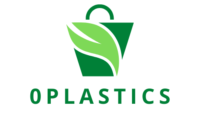In the ever-evolving landscape of consumer behavior, a profound shift is underway, driven by a collective awareness of environmental concerns – the surge in demand for plastic-free products. Consumers, increasingly mindful of their ecological footprint, are steering towards sustainable alternatives, reshaping industries and influencing businesses to embrace eco-friendly practices. Let’s delve into the burgeoning consumer trends that underscore the growing demand for plastic-free products and the transformative impact this shift is having on the market.
1. Conscious Consumerism:
The era of conscious consumerism is in full swing, with individuals actively seeking products that align with their values. Plastic-free alternatives have become a focal point for these consumers, who prioritize sustainability and environmental impact in their purchasing decisions. The shift towards conscious consumerism reflects a desire for a more ethical and responsible approach to consumption.
2. Environmental Awareness:
Heightened environmental awareness is a driving force behind the demand for plastic-free products. Consumers are increasingly educated about the detrimental effects of plastic pollution on ecosystems, marine life, and human health. This awareness has sparked a sense of responsibility, prompting individuals to seek out alternatives that minimize or eliminate the use of plastic in their daily lives.
3. Health and Safety Concerns:
Growing concerns about the potential health risks associated with certain types of plastics have contributed to the demand for plastic-free alternatives. Consumers are becoming more discerning about the materials that come into contact with their food, beverages, and personal care products. This health-conscious mindset has led to a surge in popularity for products with safer and more sustainable packaging materials.
4. Influence of Social Media:
The influence of social media cannot be overstated in shaping consumer trends. Platforms like Instagram, Twitter, and TikTok amplify awareness about sustainable living and plastic-free alternatives. Influencers, environmental advocates, and eco-conscious brands leverage these platforms to showcase plastic-free products, fostering a sense of community and encouraging others to adopt similar lifestyles.
5. Rise of Eco-Friendly Brands:
The emergence of eco-friendly brands dedicated to plastic-free living is a testament to the shifting consumer landscape. These brands prioritize sustainable sourcing, ethical practices, and innovative solutions to reduce or eliminate plastic from their products. As consumers actively seek out such brands, market dynamics respond, leading to the rise of a new generation of businesses centered around environmental responsibility.
6. Government and Corporate Initiatives:
Government regulations and corporate initiatives aimed at reducing single-use plastics have contributed to the growing demand for plastic-free products. Bans on plastic bags, straws, and other single-use items in various regions have prompted consumers to explore and embrace alternative options. Companies, in response to both regulatory pressure and consumer preferences, are adapting their practices to meet these changing expectations.
7. Accessibility and Convenience:
The accessibility of plastic-free products has improved significantly, thanks to the growing demand. Major retailers, recognizing the trend, now offer dedicated sections for eco-friendly and plastic-free alternatives. The convenience of finding these products in mainstream stores contributes to their widespread adoption, making sustainable choices more accessible to a broader consumer base.
8. Innovative Packaging Solutions:
Innovations in packaging technology have played a pivotal role in meeting the demand for plastic-free products. Businesses are exploring and implementing alternatives such as compostable packaging, biodegradable materials, and reusable containers. These innovations not only cater to environmentally conscious consumers but also set industry standards for responsible packaging practices.
9. Educational Initiatives:
Consumer demand for plastic-free products is intertwined with educational initiatives that highlight the environmental impact of plastic. Schools, organizations, and advocacy groups are actively involved in raising awareness about plastic pollution, influencing consumer behavior and fostering a sense of responsibility among the younger generation.
In conclusion, the growing demand for plastic-free products is a dynamic phenomenon fueled by a combination of environmental consciousness, health concerns, and societal shifts towards sustainable living. As consumers increasingly prioritize plastic-free alternatives, they are not just making purchasing decisions; they are driving a transformative wave that challenges industries to embrace eco-friendly practices. This shift is not merely a trend; it is a reflection of a collective commitment to building a more sustainable and plastic-free future, one conscious choice at a time.
